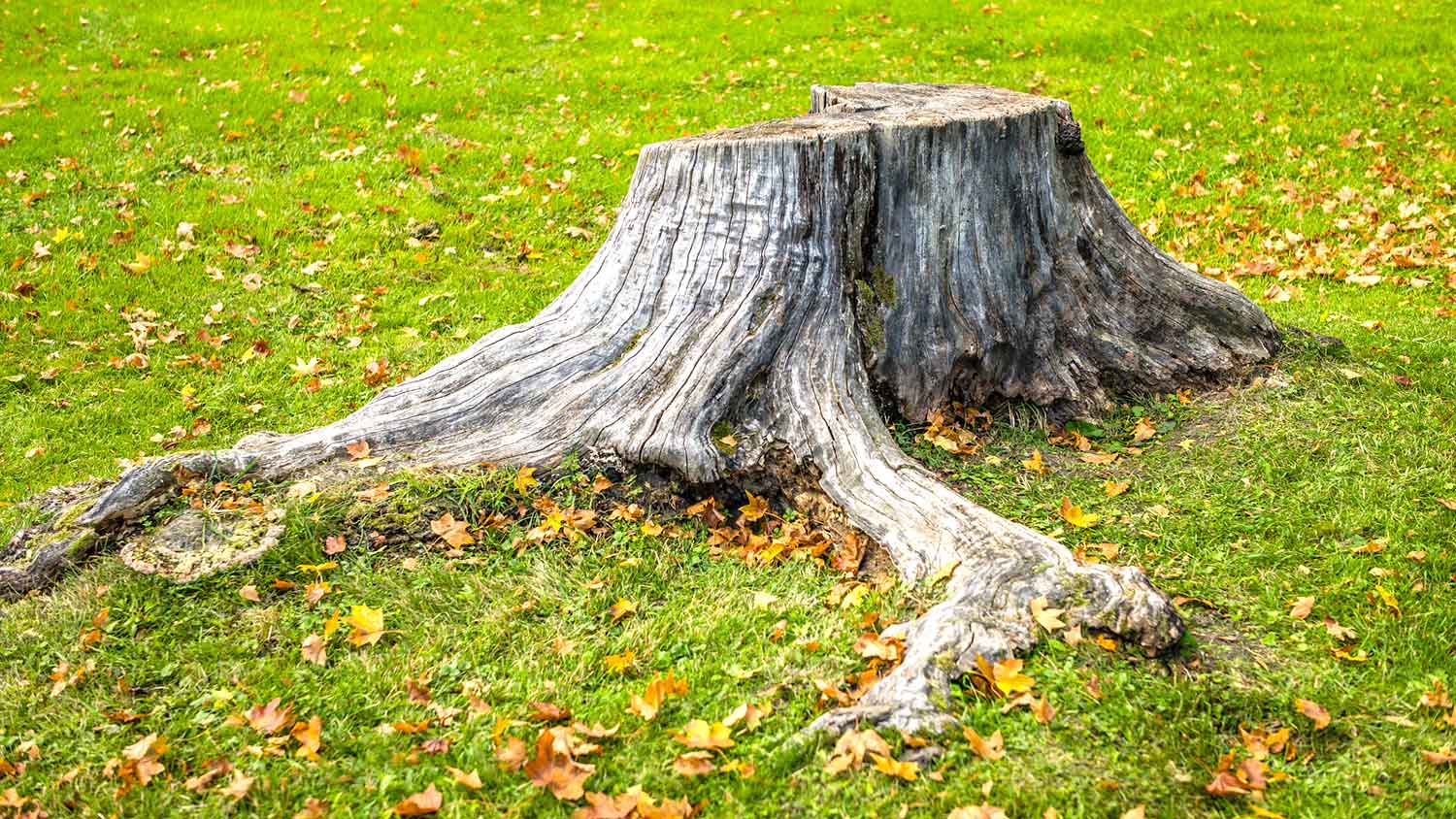Do Tree Roots Grow Back If You Cut Them?
Chop it like it’s hot, but some tree roots still won’t quit


Some tree species can regrow roots after being cut, while others cannot.
Root regrowth depends on tree type, age, and how the roots were cut.
Cutting large or a significant amount of roots can damage tree health and stability.
Chemical treatments and root barriers can help prevent regrowth.
Are your tree roots interfering with your home's foundation, sidewalk, or yard? There's a good chance they might grow back, even if you cut them. Some trees continue growing by sending out new shoots, even after their roots are severed. If you want to stop tree roots from growing back, here's what you need to know.
Do Tree Roots Grow Back If You Cut Them?

Even after a tree has been cut down and its stump has been removed, some tree roots will continue to grow, depending on the species of tree. Willows, poplars, elms and specific oak trees vigorously sprout, meaning they produce new shoots from their root systems, which are extensive, even after they’ve been cut.
Some roots may continue growing, eventually creating a new tree. Others that sprout or leave to photosynthesize will eventually die, but it may take years before that happens. Root depth and size of the can impact regrowth potential.
Other factors that impact root growth include the health of the tree, as strong trees have a greater chance of regenerating, cut location (roots close to the trunk have a greater chance of regrowth than those further out), and soil conditions.
How to Remove Tree Roots and Prevent Regrowth
If you want to keep the tree, when removing its roots, make sure to take some necessary precautions to keep yourself, your home, and the tree safe. Cut roots only when necessary, avoiding those that support the tree. Use sharp, clean tools to prevent unnecessary damage—and apply pruning sealers only if recommended for the species. Once you’ve finished, keep an eye on the tree for any signs of stress, such as wilting or scorching leaves.
If you’re not keeping the tree, you can hire a tree removal service to knock down the tree, followed by a stump removal company in your area to grind the stump. Grinding will help expedite the roots’ decay; however, this natural process can take years. You can also try other methods, such as digging out the roots, using chemical herbicides, or epson salts (or salt and boiling water). This method requires several applications over a few months’ time.
To prevent or manage root regrowth, install root barriers to direct future growth away from structures, and when replanting, replace any problematic trees with a non-invasive species.
Frequently Asked Questions
If major support roots are cut, the tree may become unstable. Many are located just below the soil’s surface. Even cutting roots that are less than one-half inch under or outside the edge of a tree’s canopy can cut off its water, causing it to decline, die, and eventually topple.
Any cutting of tree roots can hurt or kill a tree, which is why it's recommended you don’t do it unless the roots are damaging or invasive on a nearby structure like your home. You should never cut more than 15 percent of above-ground tree roots at one time. If you have any questions about cutting tree roots, contact your local arborist.
If you’re planning on keeping the tree, unless the roots are invasive, there’s no need to remove them, as doing so can cause damage to the tree. If the tree has been cut down and the stump and roots are left, grinding and removing the stump can cause root decay for some species. For other species, the stump and roots will need to be removed to prevent pests, disease, and possible tree regrowth.
The depth of tree roots depends on the species. Trees like oaks and maples can have root systems that grow down 20 feet or more. However, trees that grow in shallow soils will have roots that go only a few feet down. Research how your tree species grows in your climate area to estimate root depth.















